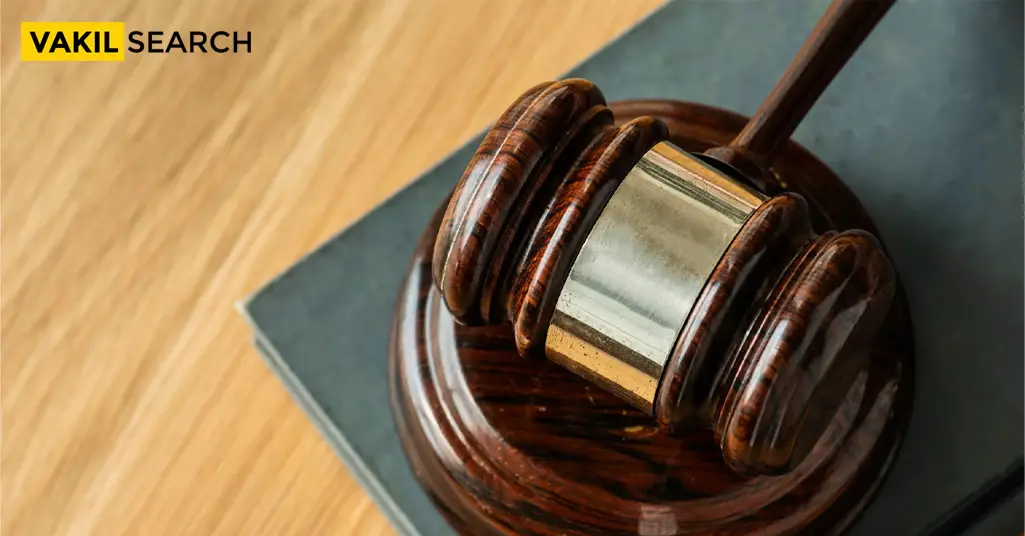In this blog, we will explain some famous cases of public interest litigation that are drawn as examples of PIL. Continue reading to learn more!
PIL in India, in a nutshell, are litigation cases involving any public interest. Any public-spirited person may bring a legal action to safeguard the “public interest” in any court of law. In our judicial system, PIL has achieved a position of great importance. In India, the first public interest litigation case was brought in 1976 in Mumbai Kamgar Sabha v. M/s Abdulbhai Faizullabhai and Others [1976 (3) SCC 832]. Justice Krishna Iyer’s historic decision planted the seed for PIL litigation. Soon after, thanks to Justice Bhagwati’s efforts, the PIL concept matured and developed to a significant level. PIL cases in India brought about change. People frequently wonder which cases are public interest litigation cases. So, in this article, we will discuss 5 significant landmark cases that serve as examples of PIL in India.
Famous Cases of PIL in India
These are the famous cases in PIL in India.
1. Vishaka v. State of Rajasthan
In this PIL, Bhanwari Devi sought to prevent the marriage of a one-year-old girl in rural Rajasthan as part of a government campaign against child marriage.
First, locals retaliated by threatening Bhanwari Devi and her family. after they also imposed a socioeconomic boycott on them. Afterwards, on September 22, 1992, five men raped Bhanwari Devi.
When Bhanwari Devi tried to pursue justice, she faced numerous obstacles. Naina Kapur, a lawyer who had attended Bhanwari Devi’s criminal trial, became frustrated by the criminal justice system’s inability to offer concrete remedies or restore the victim’s dignity,
And she made the decision to file a PIL case action in the Supreme Court to protest workplace sexual harassment.
In 1992, five NGOs filed the Vishaka writ petition against the State of Rajasthan, its Women and Child Welfare Department, the Department of Social Welfare, and the Union of India.
After Vishaka decision, sexual harassment is a “clear violation” of the fundamental constitutional rights to equality non-discrimination, life, and liberty as well as the freedom to engage in any occupation. These instructions were given to employers prevent harassment,
It also has a description of the complaint procedures that needed to be “strictly observed in all workplaces. it should be done for the preservation and enforcement of the right to gender equality.”
It has promoted greater international law compliance and women’s rights enforcement at the highest judicial level.
Thus, the case has been referred to as “groundbreaking,” “one of the most powerful legacies” of the PIL case, and a “trendsetter” that “caused a revolution.”
2. Javed v. State of Haryana
A coercive population control legislation that oversaw panchayat elections were challenged by the Javed litigants as being unconstitutional.
A “person having more than two living children” was prohibited from holding certain panchayat offices under the Haryana Provision.
The idea behind this two-child standard was to make family planning more widely accepted. it was accepted with the hope that other people would follow their elected officials’ restraint in having children.
In this PIL case law, both parties were people who had been barred from running for election or continuing in a panchayat position. It was because they had more than two children.
The Court’s primary focus was on “the problem of population growth as a national and global concern” at the expense of upholding human rights,
While upholding the Haryana Provision as “salutary and in the public interest.”
The Javed decision did not conduct a thorough analysis of whether the impugned provision was truly having the desired impact on family planning.
The clause was found “well-defined” and “based on understandable differentia” by the court.
And they also predicated on a clear objective to promote family planning.
3. Hussainara Khatoon v. State of Bihar
Among all cases, many have recognized this one as the first and most well-known case of PIL in India, or the first Public Interest Litigation Case.
In this PIL case, the court’s attention was brought to the extraordinary circumstance of Bihar’s undertrials,
Who had been held in custody pending trial for lengths well in excess of the maximum term for the offenses they were charged with.
The court not only proceeded to make the right to a speedy trial the main issue in the case,
but it also issued an order for the general release of nearly 40,000 people who were awaiting trial but had been held longer than the allotted time.
For more clarity you can contact Vakilsearch, they will solve all your queries.
4. M.C. Mehta vs. Union of India
The judgment delivered on January 12, 1988, criticized the local government for permitting untreated sewage from Kanpur’s tanneries to enter the Ganges.
Over the course of time, over 50,000 polluting companies in the Ganga basin have been subject to many Orders and three historic decisions.
More than 250 towns and localities have been told to build sewage treatment plants in this case, in addition to the industries.
A planned leather complex in the state of West Bengal has received 600 tanneries. It was originally situated in congested residential areas of Kolkata.
Six hundred tanneries that were formerly located in Kolkata’s most crowded residential districts have been transferred to the State of West Bengal’s proposed Leather Complex. The Court then forced the closure of many factories.
And these businesses could only return after installing effluent treatment facilities and implementing pollution control measures.
These directions have prevented the consequences of air and water pollution on millions of people in the Ganga basin.
5. Parmanand Katara vs. Union of India
Human rights advocate Parmanand Katara petitioned the Supreme Court with a writ on the basis of a newspaper article about the death of a scooterist who was hit by a speeding car.
He was told to be transported to a hospital 20 km distant that was permitted to handle medico-legal matters after doctors refused to treat him.
The Supreme Court ruled in this PIL case law on the grounds of petition that
- Life preservation is of the greatest priority.
- Every doctor has a duty to extend their services with the expertise for life protection. Whether they work in a government institution or not.
- There should be no question that the effort to save the person should be given first priority.
By everyone involved in the situation, including the police, other people, and legal professionals.
Conclusion
Numerous changes and amendments have resulted from these cases of PIL in India.
If you want to file a PIL but don’t know how you can contact Vakilsearch, their team of experts will help you in filing a PIL petition. With their decades of experience, our legal professionals can assist you in every legal matter.
Read more











